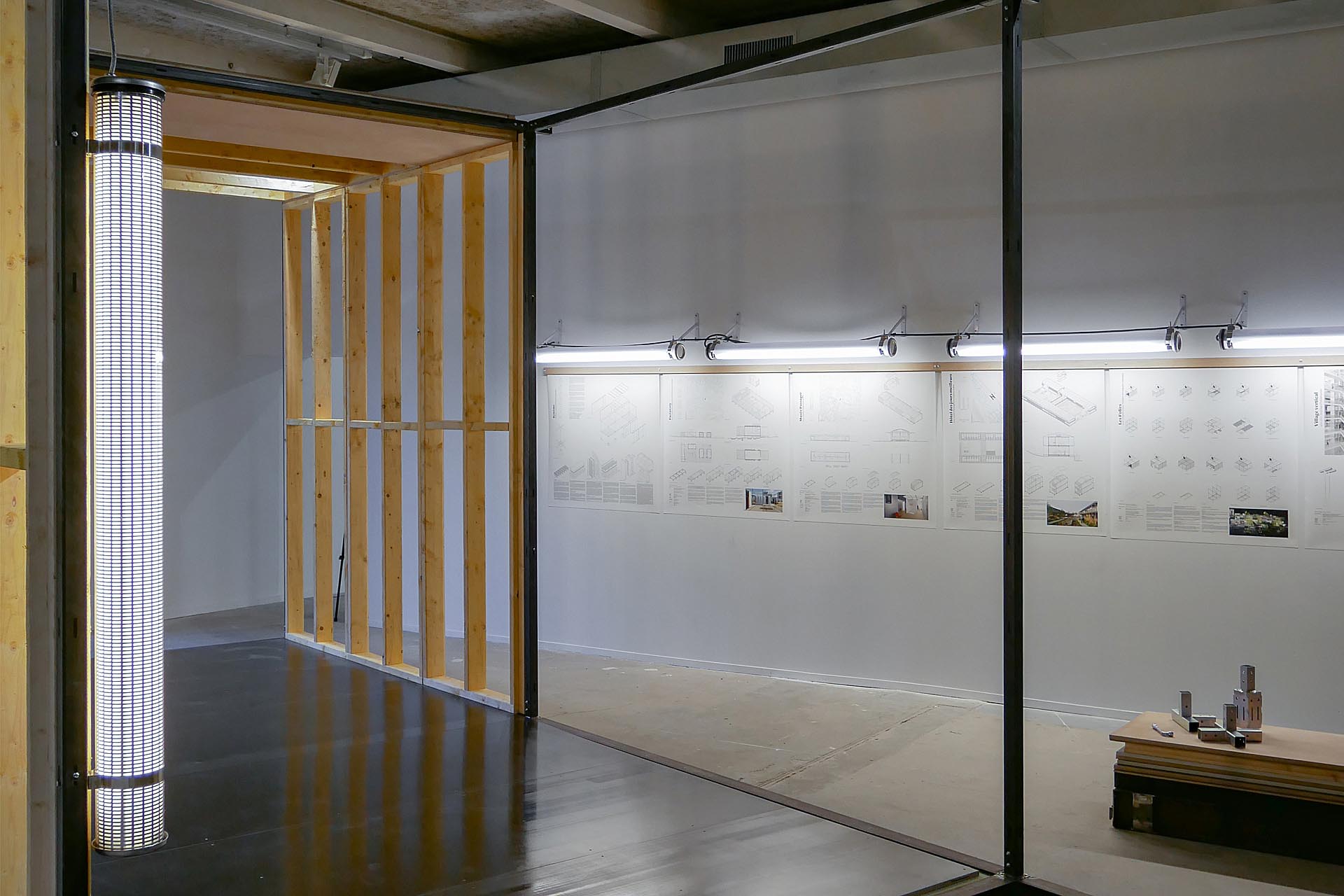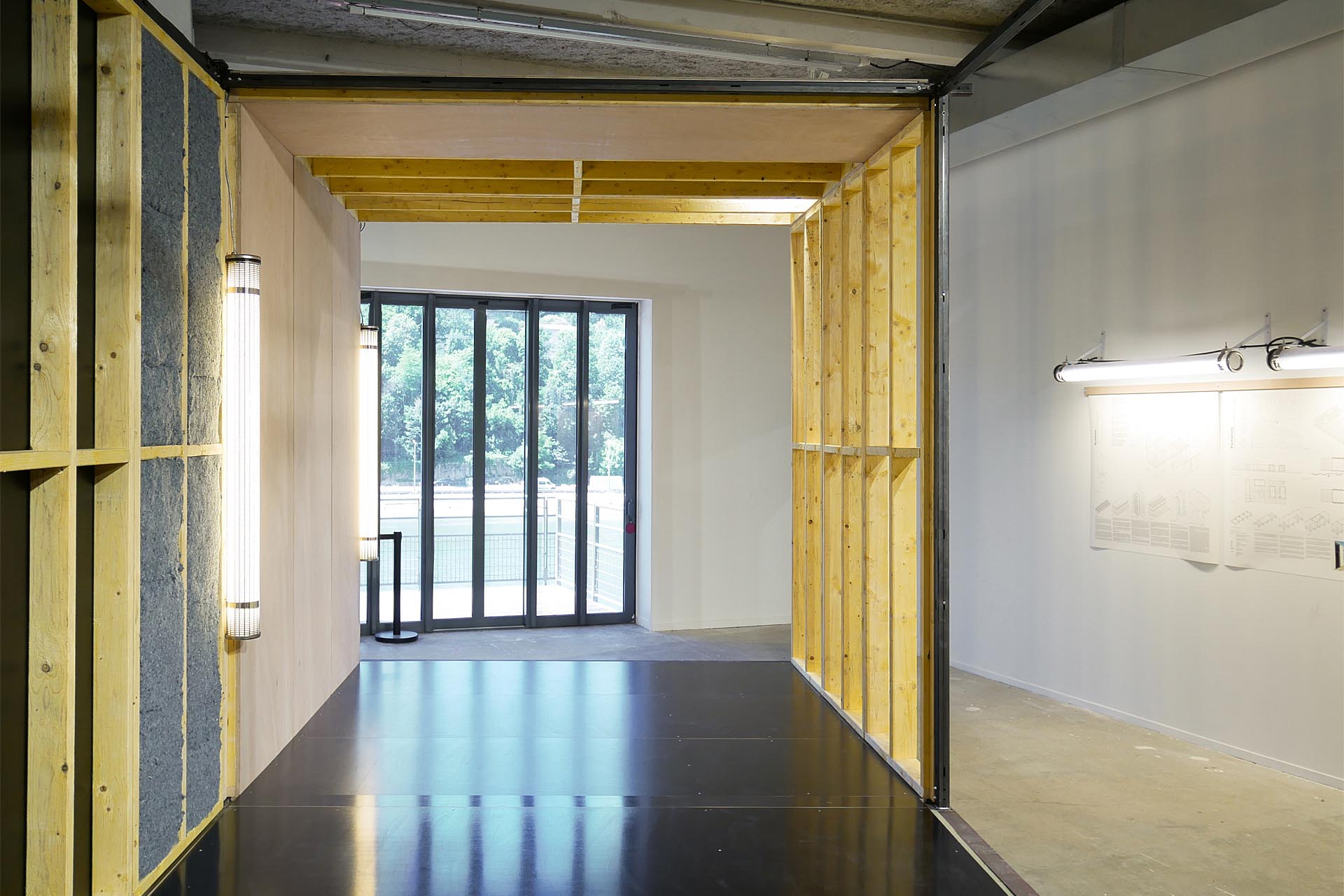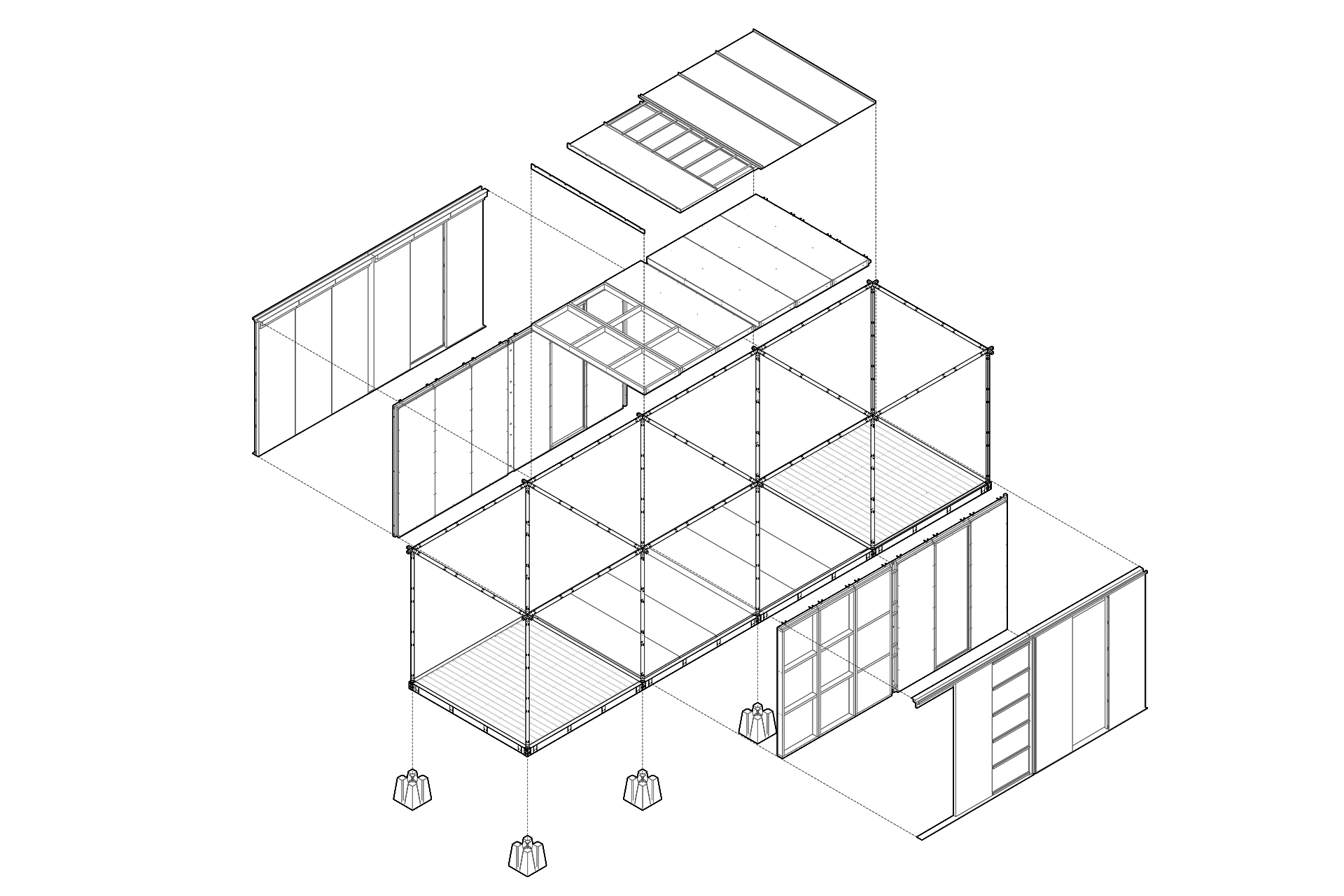
© Vanessa BOSIO

© Vanessa BOSIO

© Vanessa BOSIO

© Vanessa BOSIO

Exploded axonometry

Assembly diagram
Architecture incrémentale
2017 S07
In computing, incrementation is the operation of adding 1 (and by extension a fixed integer value) to a meter. The inverse operation, decrementation, consists in removing 1 (or an integer value) from the meter. It is therefore the idea of an architecture using components whose implementation is completely reversible and, by extension, mobile. This concept was defended by Yona Friedman and more concretely experienced by Prouvé. A system. To imagine a system is to look for a hybrid constructive principle based on the optimization of materials with the objective of being completely reversible: it can be moved, transformed and recycled according to defined temporal constraints. The units (1) become components. These can be mounted and disassembled together or separately. Modularity and combinatorial potential offer the possibility to adapt to changing uses. In situ, it aims at full autonomy. The whole seeks economic optimization. The flexibility of uses and the organization of materials allow it to adapt to changes. The user can easily transform and maintain modules as components using an iterative construction method. Five projects are presented at the Biennale d’Architecture de Lyon. Three experimentations built or developed: the Factatory, a mobile artist’s residence, as a starting point in Lyon for this research project, the Musée Passager, a traveling exhibition pavilion, and the Hotel des Jours Meilleurs, a nomadic accommodation center for Paris. And two concrete utopias: the Folies, a project to transform the car parks of shopping centers, and the Vertical Village, that takes place on abandoned viaducts. If these projects are diverse responses to specific situations, the synthesis allows us to understand the concept of incremental architectures. The principles are evolving progressively, following a process of research-action. The system evolves and adapts to site conditions. The materials are redefined according to available resources, the components are resized to adapt to established constraints. They form habitable modules, defined by the uses. The membranes make it possible to respond to the environmental context and current standards. Everything is then installed in situ. The whole produces a narrative that integrates the participation of designers, builders and users in the project. The incremental architecture is modular, dynamic and adaptable. It transforms according to the uses defined by the participants of the project and it must integrate the needs of the inhabitants while adapting to the constraints of the site.

